July 2023
Families Along the Goulburn
19 07 23 14:00 Filed in: Jim
Recently we discovered a bit more about the Molesworth branch of our dad’s family. Down the rabbit hole we went.
It took weeks to piece together the snippets of information we had. We doubled checked information, discarded red herrings, created a timeline. We complained about the way names appeared and reappeared in different generations. We cut and pasted a colour coded chart. Finally, gradually, the stories came into focus in our minds.
Our story begins in Ireland.
Four families: McCormacks, Fords, Hamiltons and Ryans
Three of the families, the McCormacks. the Fords and the Ryans, all Catholics, all emigrated about 1848 from Southern Ireland: Limerick, Galway and Tipperary
The fourth family, the Hamiltons, were protestants, of Scottish Irish heritage. They emigrated from Antrim, Northern Ireland, also in 1848.
The Northern Irish Hamiltons arrived with some money, ready to buy land. But
our Southern IrIsh were probably driven out by the general economic turmoil and devastation caused by the Irish Potato Famine of 1845-1852.
At that time, the vast majority of the Irish Catholic population had little or no access to land ownership and many lived in appalling poverty.
Ninety percent of the land in Ireland was owned by Protestant landowners, who rented it out in small parcels to Irish tenant farmers. Already poor and dependent on the potato crop, Irish families starved when successive harvests failed, due to Potato Blight. As a result, Irish people emigrated in large numbers, land hungry and ready to and make their fortunes.
The colony the McCormacks, Fords, Hamiltons and Ryans arrived and settled in, had been ‘opened up’ by the squatters coming down from north of the Murray and inland from Portland. The Aboriginal tribes had been largely dispossessed, vast fortunes had been made, and the landed aristocracy had emerged as a powerful force in the burgeoning colony.
It is both expected and fascinating to see our Irish immigrant forbears’ land acquisition and prosperity mirrored, in the opening up of land for settlement in Victoria. This took place over several decades, primarily through a series of land acts, designed to break up the vast holdings of the squatters and encourage agricultural development, population growth, and the establishment of communities.
Between 1865 and 1890 Land Acts enabled land to be acquired at a fair price, and paid off in instalments. Specified improvements had to be made such as fencing, clearing and cultivation.
As we will see, our Irish families also benefitted from the growth and prosperity stemming from the Gold Rush. In 1851 gold was discovered in Ballarat, leading to the 1850s Gold Rush, a transformative event in Victorian history.
The colony grew rapidly in both population and economic power and our families, among others, took full advantage of the opportunities offered.
They set about the serious business of acquiring property supplying the new, lucrative, growing market with their produce. Country towns around them grew and with increased wealth, substantial civic buildings and churches were built. Railways and roads were constructed providing quicker and easier access to markets and facilitating social and family connections.
It would have been an exciting time for our four families, as they bought and developed their land holdings and participated in the civic life of the Colony of Victoria, with its own Lieutenant-Governor and elected Victorian Legislative Council.
During the first fifteen years after arriving in the colony, our four Irish Families became two couples.
1 James Hamilton and Bridget Ryan
The protestant Hamilton family from Northern Ireland comprised only a mother and son. We know that James Hamilton’s father had recently died. James was in his late teens, when he and his mother emigrated to Port Phillip, with enough capital to acquire a property in the colony. They chose Upper Plenty, which at that time was a rural area.
The Ryan family also emigrated about 1848.
About seven years later, in 1855, James Hamilton married Bridget Ryan. Bridget was a Catholic. Sue and I know something of this quandary, being daughters of a similar “mixed marriage”. The wedding was held on a property “Richland” near the Hamilton’s place at Upper Plenty. The property belonged to Mr David Johnston
Archbishop Little, who is also related to these four families and has written about them, has a bit to say about this marriage:
“… the marriage of James and Bridget was a truly valid Catholic marriage in the eyes of the Church.”
What he means here is that James would have agreed to the children of the marriage being brought up Catholics. He certainly followed through with this, even driving his wife and children to church on Sundays. Two of their daughters later became nuns.
James and Bridget stayed on for a further twelve years in Upper Plenty, where the first six of their children were born. These children included Charles, Grace, Johanna and Kate. Johanna was our Great Grandmother.
Then, in 1866, they acquired “Cremona Estate”, near present day Molesworth. They ran dairy and beef cattle and grew cereals on the rich
river flats.
Cremona homestead was "situated on the southern concave side of a great sweeping arc of the Goulburn river ….. it fronts the Whanregarwen road distant some three miles east from the present township of Molesworth" 1866:
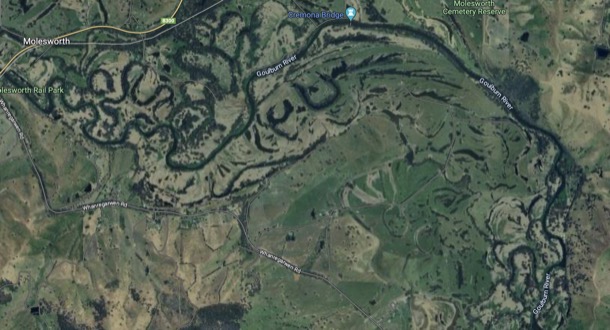
Six further children, another five of them girls, were born at Cremona, before Bridget’s death, at the age of 56, in 1889.
Archbishop Little writes glowingly of life at Cremona, and of the three eldest Hamilton girls in particular. He describes them as “charming, refined, eligible and capable young ladies.” He describes the children’s education. An in-house private tutor taught them Art, Music and Painting, as well as academic subjects. But they all helped out on the farm as well, including the older girls, Grace, Johanna and Kate.
2 John McCormack Snr and Jane Ford
We don’t know the initial activities of the McCormack and Ford families, until, in 1850, two years after landing in Port Phillip, John McCormack (Senior) married Jane Ford at St Francis Church on the corner of Lonsdale and Elizabeth streets in Melbourne. Both had been in their late twenties and unmarried when they emigrated.
St Francis church today, the oldest still operating Catholic church in Victoria:
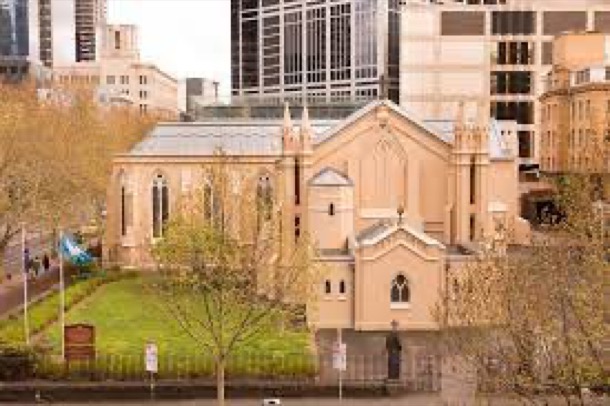
The couple settled near present day Beveridge, renting a property “Red Barn”. The property was very near the main road from Melbourne to Sydney. The family worked hard and developed a dairy herd, specialising in cheese, which they initially sold to passing diggers on their way to the goldfields.
Red Barn Lane today:
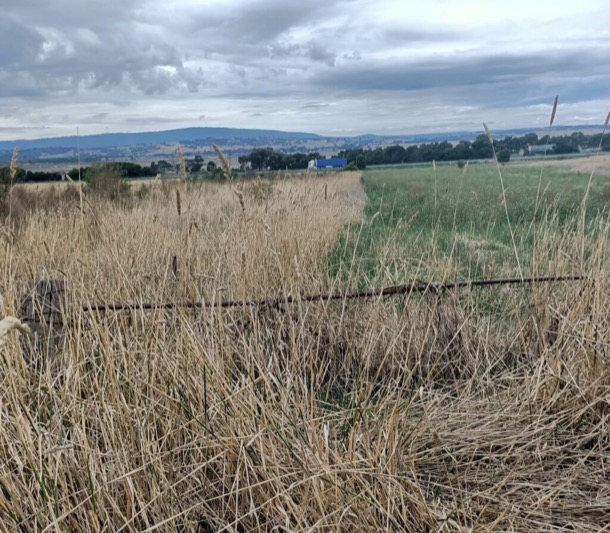
There was money to be made, so much, that the couple were later able to settle their sons on properties along the Goulburn River.
The first, of these, in 1876, was the eldest, James McCormack, then aged 18. His property, called Tallarook House, (later renamed Landscape), was at Tallarook, a hundred kilometres from Mebourne. James was unmarried at this stage and Tallarook House remained without a mistress for a further twelve years. Clearly, James was very involved in the community. He was elected as a councillor for the Shire of Seymour in 1887.
"Landscape" today:
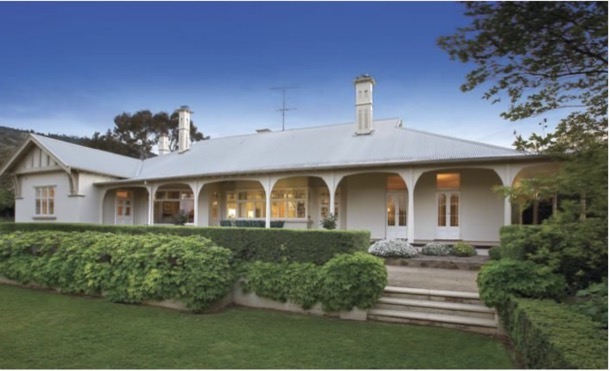
"Landscape" interior:

The second McCormack to be settled along the Goulburn River, was John Jnr. His property, acquired in 1886, called Balham Hill, was near Molesworth. He also became a councillor, for Yea Shire.
Balham Hill:
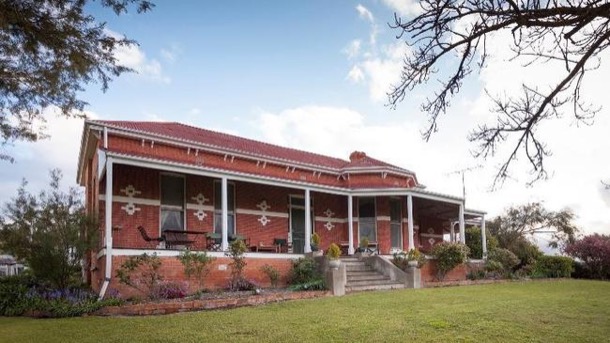
Balham Hill property:
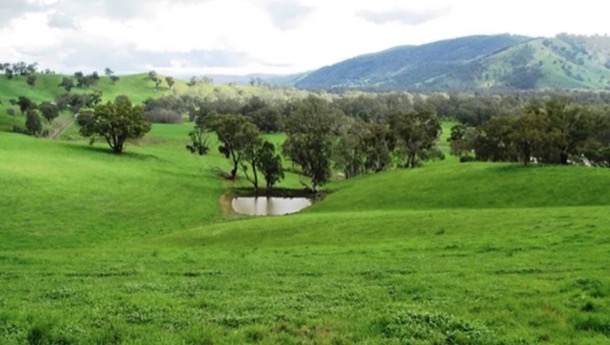
The Big Romance
So now we have three properties along the Goulburn. James and Bridget Hamilton’s Cremona and John McCormack’s Balham Hill, both near Molesworth, and James McCormack’s Tallarook House, twelve miles away.
The Hamilton girls, Grace, Johanna and Kate probably had met the McCormack boys, James, John Jnr and their brother Michael, at church. They were all Catholics.
The Hamiltons and McCormacks were a natural social fit: all pasturalists and Catholics of Irish extraction.
Archbishop Little tells us that the “Hamilton girls” stabled their horses at Tallarook House when catching or meeting the trains, and “made eyes at the McCormack boys”.
The roads between the Upper Goulburn and the railhead at Tallarook, had been completed by 1880, and the railway from Tallarook to Yea was being built from 1883. So we suppose that the road from the Upper Goulburn to Tallarook would have been a substantial one, about the time the girls were using it. Tallarook was where farm produce, etc was taken to put on the train for the markets in Melbourne.
But it’s a long way from Molesworth to Tallarook. Were they driven in a carriage of some sort, accompanied by workers from Cremona? Did they ride their own horses all that way? It was too far for a day trip. Where did they stay? And had the Hamilton girls’ parents met the McCormack boys’ parents, who lived quite a long way away, at Beveridge?
It’s a love story we can only speculate about.
But, ultimately, three Hamilton girls married three McCormack boys.
The most important to us, was Johanna Hamilton, our great grandmother, who married John McCormack Jnr of Balham Hill, in 1888.
Her sister, Grace, married James McCormack of Tallarook House in 1890
And Kate was the third sister, who married Michael McCormack. They settled initially in Berwick, and later Benalla.
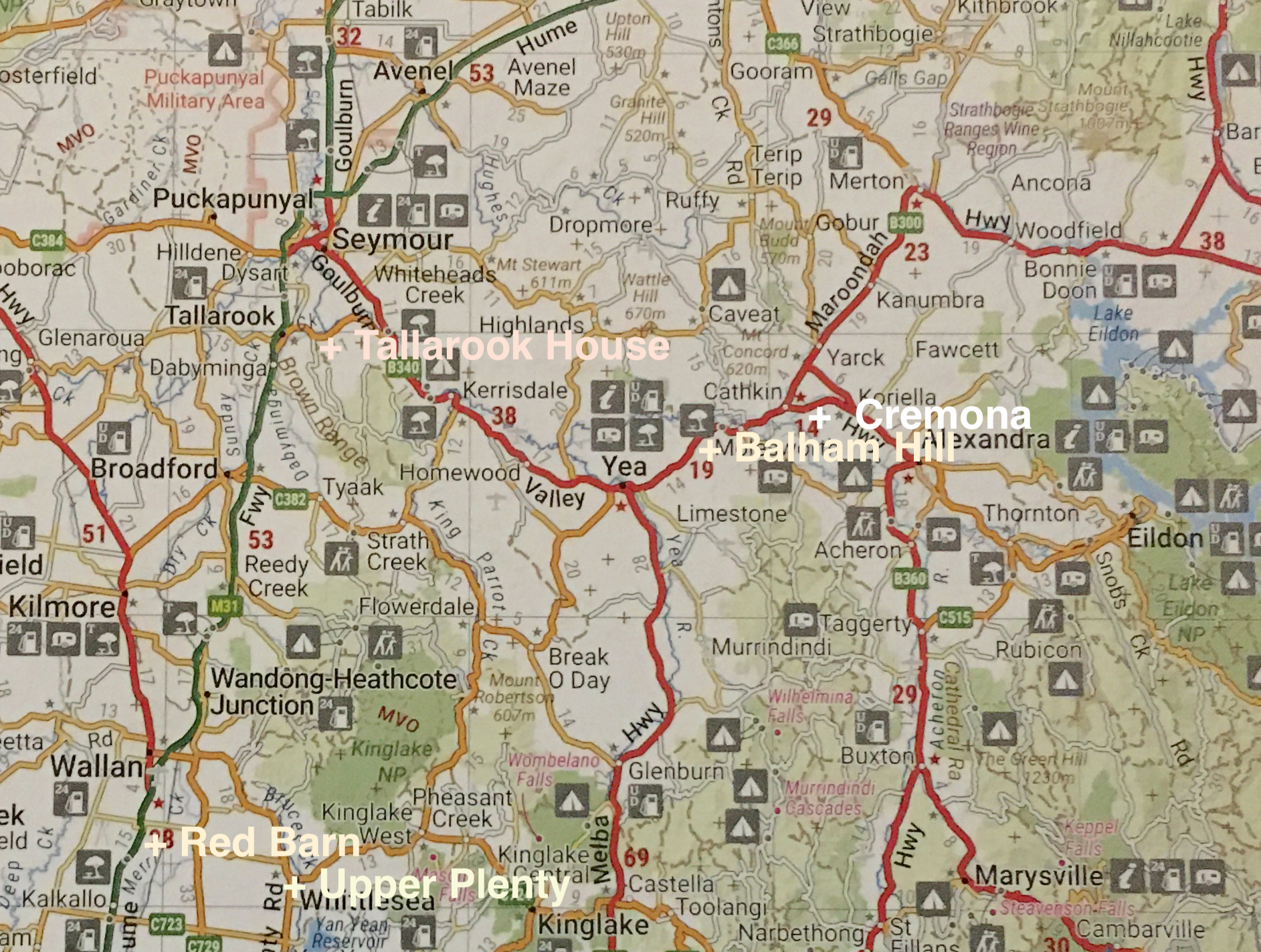
It took weeks to piece together the snippets of information we had. We doubled checked information, discarded red herrings, created a timeline. We complained about the way names appeared and reappeared in different generations. We cut and pasted a colour coded chart. Finally, gradually, the stories came into focus in our minds.
Our story begins in Ireland.
Four families: McCormacks, Fords, Hamiltons and Ryans
Three of the families, the McCormacks. the Fords and the Ryans, all Catholics, all emigrated about 1848 from Southern Ireland: Limerick, Galway and Tipperary
The fourth family, the Hamiltons, were protestants, of Scottish Irish heritage. They emigrated from Antrim, Northern Ireland, also in 1848.
The Northern Irish Hamiltons arrived with some money, ready to buy land. But
our Southern IrIsh were probably driven out by the general economic turmoil and devastation caused by the Irish Potato Famine of 1845-1852.
At that time, the vast majority of the Irish Catholic population had little or no access to land ownership and many lived in appalling poverty.
Ninety percent of the land in Ireland was owned by Protestant landowners, who rented it out in small parcels to Irish tenant farmers. Already poor and dependent on the potato crop, Irish families starved when successive harvests failed, due to Potato Blight. As a result, Irish people emigrated in large numbers, land hungry and ready to and make their fortunes.
The colony the McCormacks, Fords, Hamiltons and Ryans arrived and settled in, had been ‘opened up’ by the squatters coming down from north of the Murray and inland from Portland. The Aboriginal tribes had been largely dispossessed, vast fortunes had been made, and the landed aristocracy had emerged as a powerful force in the burgeoning colony.
It is both expected and fascinating to see our Irish immigrant forbears’ land acquisition and prosperity mirrored, in the opening up of land for settlement in Victoria. This took place over several decades, primarily through a series of land acts, designed to break up the vast holdings of the squatters and encourage agricultural development, population growth, and the establishment of communities.
Between 1865 and 1890 Land Acts enabled land to be acquired at a fair price, and paid off in instalments. Specified improvements had to be made such as fencing, clearing and cultivation.
As we will see, our Irish families also benefitted from the growth and prosperity stemming from the Gold Rush. In 1851 gold was discovered in Ballarat, leading to the 1850s Gold Rush, a transformative event in Victorian history.
The colony grew rapidly in both population and economic power and our families, among others, took full advantage of the opportunities offered.
They set about the serious business of acquiring property supplying the new, lucrative, growing market with their produce. Country towns around them grew and with increased wealth, substantial civic buildings and churches were built. Railways and roads were constructed providing quicker and easier access to markets and facilitating social and family connections.
It would have been an exciting time for our four families, as they bought and developed their land holdings and participated in the civic life of the Colony of Victoria, with its own Lieutenant-Governor and elected Victorian Legislative Council.
During the first fifteen years after arriving in the colony, our four Irish Families became two couples.
1 James Hamilton and Bridget Ryan
The protestant Hamilton family from Northern Ireland comprised only a mother and son. We know that James Hamilton’s father had recently died. James was in his late teens, when he and his mother emigrated to Port Phillip, with enough capital to acquire a property in the colony. They chose Upper Plenty, which at that time was a rural area.
The Ryan family also emigrated about 1848.
About seven years later, in 1855, James Hamilton married Bridget Ryan. Bridget was a Catholic. Sue and I know something of this quandary, being daughters of a similar “mixed marriage”. The wedding was held on a property “Richland” near the Hamilton’s place at Upper Plenty. The property belonged to Mr David Johnston
Archbishop Little, who is also related to these four families and has written about them, has a bit to say about this marriage:
“… the marriage of James and Bridget was a truly valid Catholic marriage in the eyes of the Church.”
What he means here is that James would have agreed to the children of the marriage being brought up Catholics. He certainly followed through with this, even driving his wife and children to church on Sundays. Two of their daughters later became nuns.
James and Bridget stayed on for a further twelve years in Upper Plenty, where the first six of their children were born. These children included Charles, Grace, Johanna and Kate. Johanna was our Great Grandmother.
Then, in 1866, they acquired “Cremona Estate”, near present day Molesworth. They ran dairy and beef cattle and grew cereals on the rich
river flats.
Cremona homestead was "situated on the southern concave side of a great sweeping arc of the Goulburn river ….. it fronts the Whanregarwen road distant some three miles east from the present township of Molesworth" 1866:

Six further children, another five of them girls, were born at Cremona, before Bridget’s death, at the age of 56, in 1889.
Archbishop Little writes glowingly of life at Cremona, and of the three eldest Hamilton girls in particular. He describes them as “charming, refined, eligible and capable young ladies.” He describes the children’s education. An in-house private tutor taught them Art, Music and Painting, as well as academic subjects. But they all helped out on the farm as well, including the older girls, Grace, Johanna and Kate.
2 John McCormack Snr and Jane Ford
We don’t know the initial activities of the McCormack and Ford families, until, in 1850, two years after landing in Port Phillip, John McCormack (Senior) married Jane Ford at St Francis Church on the corner of Lonsdale and Elizabeth streets in Melbourne. Both had been in their late twenties and unmarried when they emigrated.
St Francis church today, the oldest still operating Catholic church in Victoria:

The couple settled near present day Beveridge, renting a property “Red Barn”. The property was very near the main road from Melbourne to Sydney. The family worked hard and developed a dairy herd, specialising in cheese, which they initially sold to passing diggers on their way to the goldfields.
Red Barn Lane today:

There was money to be made, so much, that the couple were later able to settle their sons on properties along the Goulburn River.
The first, of these, in 1876, was the eldest, James McCormack, then aged 18. His property, called Tallarook House, (later renamed Landscape), was at Tallarook, a hundred kilometres from Mebourne. James was unmarried at this stage and Tallarook House remained without a mistress for a further twelve years. Clearly, James was very involved in the community. He was elected as a councillor for the Shire of Seymour in 1887.
"Landscape" today:

"Landscape" interior:

The second McCormack to be settled along the Goulburn River, was John Jnr. His property, acquired in 1886, called Balham Hill, was near Molesworth. He also became a councillor, for Yea Shire.
Balham Hill:

Balham Hill property:

The Big Romance
So now we have three properties along the Goulburn. James and Bridget Hamilton’s Cremona and John McCormack’s Balham Hill, both near Molesworth, and James McCormack’s Tallarook House, twelve miles away.
The Hamilton girls, Grace, Johanna and Kate probably had met the McCormack boys, James, John Jnr and their brother Michael, at church. They were all Catholics.
The Hamiltons and McCormacks were a natural social fit: all pasturalists and Catholics of Irish extraction.
Archbishop Little tells us that the “Hamilton girls” stabled their horses at Tallarook House when catching or meeting the trains, and “made eyes at the McCormack boys”.
The roads between the Upper Goulburn and the railhead at Tallarook, had been completed by 1880, and the railway from Tallarook to Yea was being built from 1883. So we suppose that the road from the Upper Goulburn to Tallarook would have been a substantial one, about the time the girls were using it. Tallarook was where farm produce, etc was taken to put on the train for the markets in Melbourne.
But it’s a long way from Molesworth to Tallarook. Were they driven in a carriage of some sort, accompanied by workers from Cremona? Did they ride their own horses all that way? It was too far for a day trip. Where did they stay? And had the Hamilton girls’ parents met the McCormack boys’ parents, who lived quite a long way away, at Beveridge?
It’s a love story we can only speculate about.
But, ultimately, three Hamilton girls married three McCormack boys.
The most important to us, was Johanna Hamilton, our great grandmother, who married John McCormack Jnr of Balham Hill, in 1888.
Her sister, Grace, married James McCormack of Tallarook House in 1890
And Kate was the third sister, who married Michael McCormack. They settled initially in Berwick, and later Benalla.

Comments

